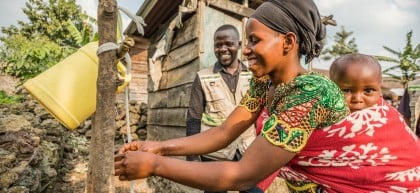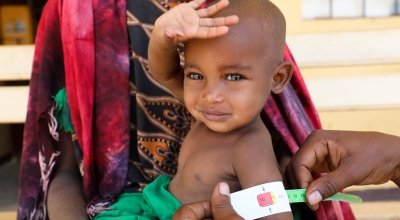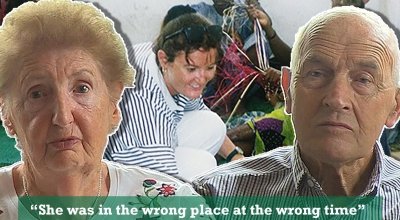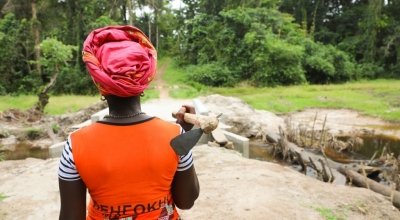
Knowledge Hub
The facts behind Somalia’s food crisis and fragility
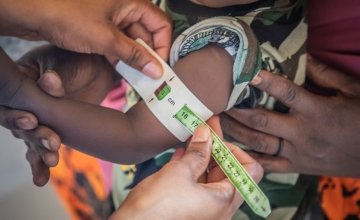
We delve into the past, present and future of Somalia, taking a look at why it is one of the world’s most complex and long-lasting emergencies, and what exactly can be done to support its vulnerable communities.
Situated in the northeast of the Horn of Africa, Somalia is a country of climatic extremes that experiences long dry seasons interspersed with two rainy seasons. Failed rains can contribute to drought conditions, while heavier than average rains can cause devastating flash flooding. This, coupled with political unrest and unrelenting violence, means that Somalia is one of the world’s most unforgiving places for the most poor and vulnerable amongst its population.
Out of a population of almost 12.3 million, an estimated 4.2 million people required humanitarian assistance last year. It is estimated that this year approximately 2.5 million children are in need (UNOCHA). In addition, there are 2.6 million internally displaced persons (IPDs) in Somalia, many of whom have been displaced multiple times due to climatic and security issues.
The hidden casualty of conflict
As with many of the world’s humanitarian crises, it is Somalia’s fragile and conflict-prone state that has led to what is now among the most complex and longstanding emergencies in the world. The civil war broke out in 1991, which saw various factions competing for influence in the power vacuum. The early 2000s saw the creation of fledgling interim federal administrations. A new Somali Federal Government was elected in 2017, and successful Presidential elections took place later the same year. Despite this progress, security remains a major challenge in parts of the country, resulting in instability, conflict and large-scale population displacements.
But what has conflict got to do with hunger?
Past conflict has meant that basic infrastructure has not been developed and government services were lacking. Much of the population did not have access to basic health care and sanitation services. Severe lack of access to sources of water, as well as the limited means to practice good sanitation practice can result in dirty water. This in turn can lead to water-borne diseases such as cholera and diarrhoea, and these can prevent those afflicted from absorbing the correct nutrients needed to survive. No access to health care also means no treatment, vaccinations or screening for malnutrition. Moreover, as fighting and insecurity affects communities, people flee their homes into a parched landscape, often with little more than the clothes on their backs. This leaves them struggling to feed their families, and often dependent on the generosity of local people or aid agencies – who can struggle to reach areas due to the dangers of the ongoing conflict and limited infrastructure.
A deadly combination
Now combine this with cycles of drought and it comes as no surprise that Somalia is one of the world’s deadliest place to be a child – of which one of the leading causes of death is malnutrition.
Starting from 2016 Somalia experienced four consecutive failed rainy seasons. The conditions were similar to the 2001 famine, in which 260,000 people lost their lives. However, the large-scale humanitarian response in 2016-17 meant that a famine was averted, even though there was still large population displacement and loss of household assets.
Although currently not experiencing famine, the situation in Somalia remains critical. Livestock are dying and crops are failing, making the availability of food unpredictable, adding even more pressure on already struggling families. This combination of drought and conflict has forced two million people from their homes. Some have come to the city of Mogadishu – having lost family members to starvation or disease along the way – seeking safety. However, people have largely settled in camps of internally displaced people, where they have built makeshift shelters with sticks and a piece of tarpaulin for roofs.
Conditions are poor – there’s no lighting, toilets, running water or access to healthcare. Those who fled from the countryside have lost not only their homes but also their livelihoods, as they now have no land to farm. The widespread destruction and ongoing violence means that it’s nearly impossible to find work – and families often cannot afford to buy sufficient food for their family.
What can be done about it?
Concern has been on the ground in Somalia since 1986. In the last year, we have provided assistance to 477,000 people in need.
Thanks to a high energy supplementary food called Plumpy’Nut, given out to malnourished children, survival rates have improved. The high-energy sachets, containing a calorie-heavy peanut-based paste, is easy to administer and because children like the taste they can gain weight rapidly. Concern runs stabilisation centres where the most severely malnourished children often present additional complications such as malaria or TB. In addition, Concern supports community-based clinics and community health volunteers who lead mobilisation, screening and referrals in the communities.
Although this is just one solution to an abundance of critical issues, it is highly effective. But until malnutrition can be brought under control, Somalia’s children will still die in terrifying numbers.
Lucy Bloxham
Digital Content Editor
